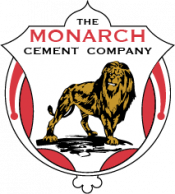Portland Cement
Manufactured from some of the earth’s most common minerals – limestone and shale – Portland cement is combined with stone, sand and water to create a chemical reaction that becomes concrete.
The limestone and shale are finely ground and moved through a kiln, where they are burned at 2800 degrees Fahrenheit to form a new material called clinker. A small amount of gypsum is blended with the clinker and then ground again into a fine powder to form cement.
Modern Portland cement can trace its roots to 1756 when a British civil engineer experimented with various limestones and additives to construct a lighthouse. The name “Portland” comes from the cement’s similarity to Portland stone, which is quarried in England on the Isle of Portland.
Monarch has been creating high-quality Portland cement at our Humboldt plant since it opened in 1909, and all of our Portland cements conform to ASTM C-150.
Type I – Otherwise known as normal Portland cement, Type I is a common-purpose cement for general construction uses, including pavements, concrete buildings, floors, precast concrete products and others uses. NOTE: No longer available as of April 2023.
Type I/II – Our Type I/II Portland cement meets the requirements of both Type I and Type II, including strength and composition requirements, and can be used in projects where either type is required. More cost-effective than storing both types, Type I/II can be used on most concrete construction projects, including those that expose the concrete to harsh environmental conditions. NOTE: No longer available as of April 2023.
Type III – Ground finer with a quicker reaction than Type I, concrete made with Type III has a high early strength rate. It has a higher 28-day strength than Type I, achieving approximately 70 percent of that strength after three days.
Type V – Type V cement can be utilized when high sulfate resistance is required, such as in structures exposed to soils or ground waters with a high sulfate content. Type V cement generally develops strength at a slower rate than Type I and has a lower heat of hydration. NOTE: No longer available as of June 2024.
Download Safety & Test Data:
Our Process
After producing cement for more than 110 years, we’ve perfected the consistency and quality of our products. However, we’re always working to implement new technology-driven efficiencies to ensure we never stop improving.


